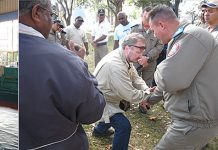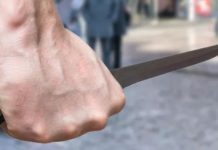In Part I we discussed the alarming upsurge of knife violence in First World countries — and the necessity for defensive knife training for the concerned citizen. We also cited a brief review of the historical Western approach to knives and knife-fighting.
During the past decade there has been a rising interest in historical European blade arts from the past – both in swordplay and the knife. Organizations such as HEMA are reconstructing ancient blade-crafts into modern sport.
However it’s highly unlikely that this resurgence of interest in edged weapons today would have occurred had it not been for the introduction of FMA’s (Filipino Martial Arts).
In the late 1960’s FMA’s were slowly being introduced to America and later to Europe, but the catalyst that launched it into the limelight was Bruce Lee’s 1973 portrayal of his weapons work in Enter the Dragon.
From that moment onward everyone wanted to learn FMA’s — it was the missing link. Apart from overly structured and ineffective solutions, traditional martial arts offered no practical or effective answers for edged weapon attacks. Filipino arts instantly gained popularity as an adjunct to traditional empty hands defense training.
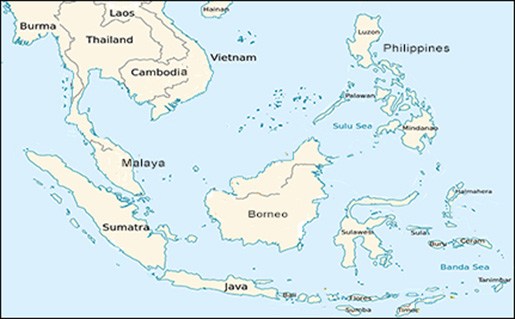
Background: History And Geography
Inasmuch as Western history, geography and culture is known at least superficially to many people. Southeast Asian history, geography and culture are much less familiar — even to many Asian’s.
Anyone researching the history of the Philippines will find it usually begins with the Spanish presence, albeit with a small introduction about early neighboring cultures trading and migrating. However the Philippines had a rich and colorful history well before this period, and it’s barely mentioned.
Inasmuch as local inhabitants of the Philippine islands had developed their own indigenous styles of fighting, as far back as 2000 B.C. (and even before). There were major influences from traders from the Malaysian and Indonesian archipelagos. Pre-colonial martial arts of the Philippines was for the most part “silat”.
The history and cultures of these Southeast Asian regions have been intertwined since ancient times. There are some differences of course such as religious influences and local cultural variations but the roots are essentially the same.
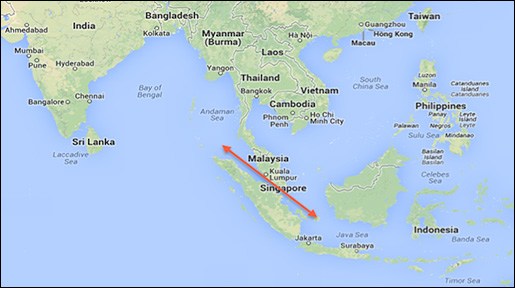
If you look at a map of Southeast Asia, The Philippines is located in the northeast ring of several major trade routes that encircle: Vietnam, Malaysia, and Indonesia, and a secondary ring that includes: Cambodia, Thailand, and further west, India and Arab lands. To the north are the Ryukyu Islands and China.
We start to hear about pre-colonial Philippines between the 9th-10th centuries B.C. when Tamil Nadu, a kingdom in southern India was trading with them. In ancient times, the Philippines was referred to as the “Island of Gold” (the kingdom east of India) by several empires including: the Arabs, Greeks and Romans.
Some scholars point to Mindanao as the “Island of Gold.” Indian and Arab trade and colonization had already spread to Malaysia and Indonesia and the most expeditous way to the Philippines from the west would have been through the Straights of Malacca.
Arnis as we know it today, developed in the Philippines after contact with the Spaniards (at least in the coastal areas) and evolved in the environment of the Spanish colonial presence. Arnis is considered by many to be immediately more street practical than many other Asian martial arts, because it is practiced specifically for personal defense.
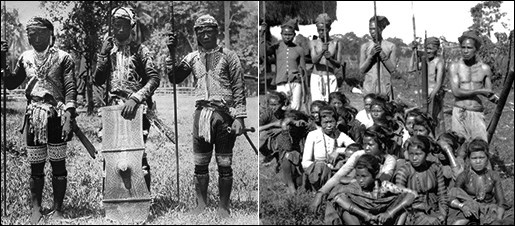
The Relevancy of Southeast Asian Knife-Work
For years the go-to place for comprehensive knife training has been Southeast Asia, that is: the Philippines, Indonesia and Malaysia. Southeast Asia has essentially been the cradle of knife culture from ancient times; unlike in northern and central Asia which were primarily sword cultures.
For this article we will focus on the Philippines because FMA’s are the most popular and well known of the knife arts.
Due to its history of foreign migration, the Philippines contain many influences from Malaysia and Indonesia. Inasmuch as the Philippine systems deal with all types and sizes of edged weapons, this article will focus on the knife.
Note: The knife is the oldest and first piercing/slicing tool and the second main weapon of early man after blunt impact tools. Two knives make up a scissors. The sense of the knife is very developed, especially in less advanced societies.
A major thrust of migration to the Philippines began around 2,000 years ago, first with Chinese then with Malaysians and Indonesians. The culture in South East Asia was very similar until the Spanish arrived. There is absolutely no doubt that 330 years of Spanish rule contributed to some Filipino sword and knife styles.
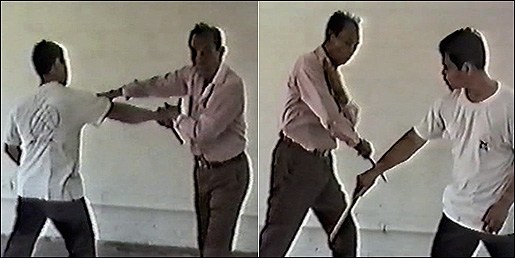
Arnis, Escrima, or Kali?
Under Spain’s rule the generic names for “sword-stick-knife” training was called “Arnis and Escrima.” The name Arnis is the Filipino term from the Spanish word “Arnes”, which means “harness” with which armor was attached to the body. Escrima, also a Spanish word comes from the word “Escrime” a term that was used in Latin countries describing the activity of fencing. Even today this term is still used in France to denote modern fencing.
For years there has been a trend to substitute the word “Kali,” for arnis and escrima. This term was coined in the U.S. In the 1990’s by a few well-known FMA’s instructors who wanted to replace the Spanish terms with a Filipino one. However in truth, scholars have not come across the term “Kali” more than a few times Filipino history. According to many people in the know, there was pressure to use this term to establish an ethnic identity for FMA’s.
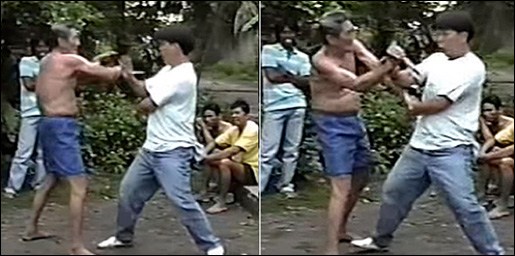
Knife work excels in the Philippines due to the fact that knives were always part of the culture for: preparing food, chopping, working the fields and self-defense. No matter what you call it, arnis, escrima or kali, these Filipino knife styles are extremely developed and effective. So effective in fact that today in Europe ISIS is currently paying large amounts of money for this knowledge. Unfortunately, some renegade arnis instructors in Europe have already started teaching FMA’s to jihadists.
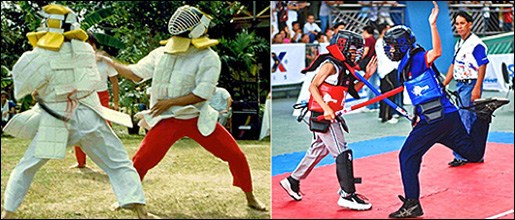
The Problem With Filipino Martial Arts Today
FMA’s (Filipino Martial Arts) have always been renowned for their edged weapons work, however not all styles are effective for street defense. The current format of most FMA’s today focuses on many over-stylized moves and promotes complicated drills without regard for measure and timing. This does not support good sparring, which should be the true indicator of its martial value.
Every style of arnis emphasizes the unique aspects of that system. Many programs talk about the sword being the stick, and the stick being the knife – well yes and no. Convergence sounds great but that’s not how it works in real life. Inasmuch as there are similarities, being skilled with one weapon doesn’t necessarily mean you are equally skilled in the others.
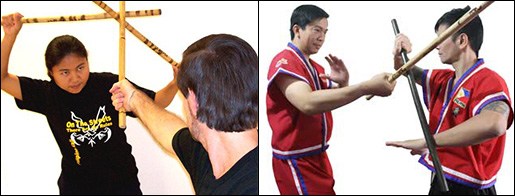
Even reputable schools that teach stick are not completely facile with the knife. Some don’t understand that some of their stick techniques may not work against a live blade (using a knife). In addition, stick and sword techniques do not readily translate to the knife, a much shorter weapon.
Many arnis schools (especially in the West) emphasize stick-work. However knife work can be greatly different. The measure and speed of the attack changes dramatically. With the exception of the neck/throat area, slashing with a small or compact blade may not necessarily stop a determined attacker – stabbing has a much greater probability of doing so.
Finding the Right FMA Program
A major difficulty today is finding a reputable program that focuses on the self-defense aspect of the knife. There are four distinct approaches in FMA’s, (of course there might be some overlap). These are the: 1. The Entertainers, 2. The Sports Players, 3. The Gangsters, and 4. Authentic FMA’s in it’s (practical applications).
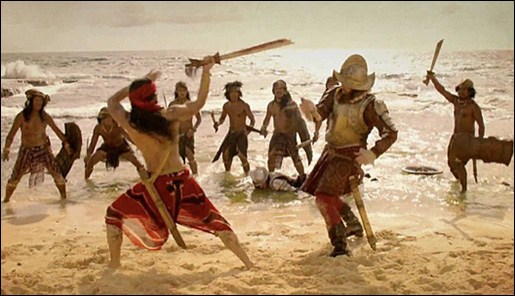
Group I – Entertainers
This group teaches techniques based on Filipino Reconquista movies as well as flow drills imported back to the Philippines from America. The purpose is to attract as many students as possible – to fill the academy. America still holds a major cultural impact in the Philippines, thus the reason to copy American arnis trends.
Some of the old Filipinos who showed their arnis skills were either actors or were influenced by the ‘zarzuelas’ or ‘moro-moro’; that is, the depictions of the Reconquista or the wars and battles between the Moros and the Spaniards. These were presented mainly during holy week in the Philippines during the Spanish occupation and the early part of the American period. The movements are flowery, wide, and are meant to be seen and were based on stick-work. This is very similar to Western stage fencing, it‘s meant to be shown on the stage or in movies but not expected to be applied in real fights.
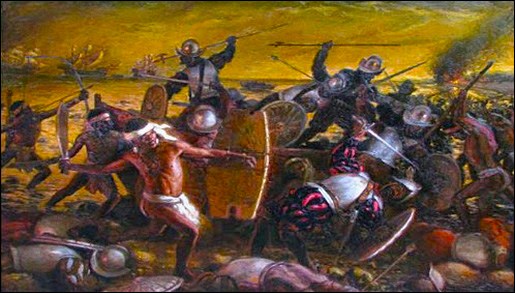
The American (and European) market was attracted to this format and arnis instructors who wanted to become famous and make money adapted to this style of presentation. Even the more serious instructors had to go with the flow or be relegated to the backroom, since the market required showmanship.

In the Philippines, most people no longer have a background of working in the rural areas or farms that require the use of bolos for general farm work such as chopping brush and processing crops. Therefore, they don’t develop the skills needed to control strikes in practice. Instead they would strike out of measure with an emphasis on feeding so that their partner could parry the weapon — instead of striking at the attacking limb or weapon arm. This contributed to a further degradation of the fighting effectiveness of old style arnis. This practice is especially common in the West.
The presenters of this type of arnis attempted to give students the impression that their system was technically impregnable and may even encourage students to seek out situations where they can use their skills on the street. There is no importance being placed on environmental or situational awareness to avoid and evade trouble.
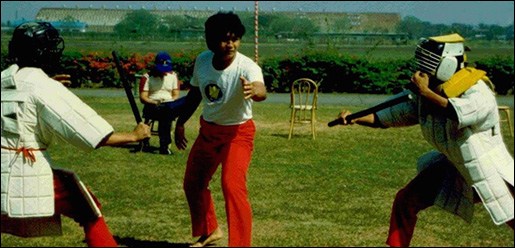
Group II- The Sports Group
The first arnis tournaments officially began in Cebu in the 1970’s, (except when the old masters sparred with each other.) From those early days till now, there has been very little display of skill. The main goal of a fight using weapons is to hit without being hit — instead stamina and strength have become the main criteria.
Participants spend hours practicing drills and when they spar they simply crash into each other together face-to-face, and pummel each other non-stop. If they were equipped with pipes or live blades, both parties would be incapacitated or dead in a short period of time. No measure, no targets, just plain hitting because the scoring system is like boxing – the most number of hits wins, and no one even attempts to parry.
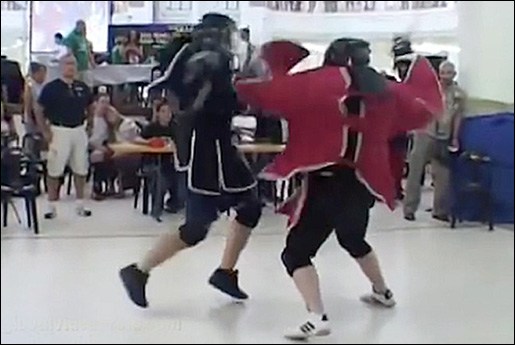
Most escrimadors even from many of the renowned schools don’t have a sense of measure and don’t even understand the subtleties of distances between the fist, knife, Bolo and the sword. That’s why they are often beaten by Western fencers in exhibition matches using sticks or practice knives.

Group III – The Gangsters
In the Philippines, southeast Asia and in Western countries there is the macho group. These people want to use their skills to harm others, they carry 4-5 knives at a time along with a kerambit to attack their victims, most are criminals or they are being groomed to have a criminal mindset by their system.
These groups want to prove themselves as killers and present realism, seeking the more gory aspects of blade usage. It really doesn’t take any talent to stab someone. Practically any man or even a child can do damage with a knife. Training to maim or kill is criminal and unconscionable. This group doesn’t even pretend to scan the environment so evasive actions could be taken, they welcome a fight, looking to test their skills.

This group often use kerambits, (a circular knife in the shape of a claw). I have no problem practicing with these weapons for informational and defensive purposes but never to use them in self-defense. These are the weapons of criminals and they inflict the worst possible wounds. In SE Asia, even the act of pulling out a kerambit in front of police can get you shot on the spot.
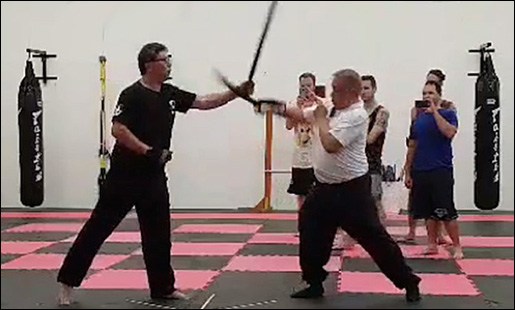
Group IV – Authentic Arnis, Escrima, Kali
There are still a few authentic groups that teach sound defensive principles and knife tactics. Only a small percentage of arnis instructors have ever been in real situations and know the value of getting out before having to use what they teach or know. I have been fortunate to meet some great escrimadors and instructors. These are some of the people we recommend for knife instruction.
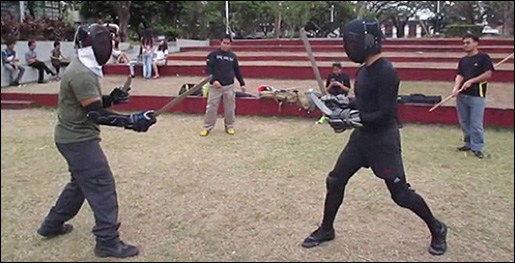
What To Practice
Many arnis instructors start off teaching with the stick and progress to the knife, however I disagree with this approach. I prefer to teach the knife first, since that’s the criminal’s weapon of choice. In urban environments the most common attacks occur with small knives, that is 4”- 5” blades, mainly folders but straight blades are also used.
The first thing I prefer to teach students is unarmed defense against the knife. Many street attacks are sudden and surprise attacks – and quite often you may not have the opportunity to get to your weapon in time. I also recommend students to carry a light flexible laptop bag to be utilized as a shield.
There are generally two types of edged weapons attacks:
#1. Dedicated attacks where the attacker comes in and commits his actions to a particular movement, thus exposing himself, #2. Repeated thrusts or slashes, where the attacker stays at a distance and stabs/slashes multiple times, this style is more dangerous.
For beginners I have noticed that students who practice 2-3 times per week make the most progress.
Recommended Training Groups
James Keating Master at Arms: (Oregon, USA)
Bowie Knife, Silat, Tai Chi Chuan, Red Boat Wing Chun Concepts, and Tactical Pistol
http://www.jamesakeating.com/
Ray Floro – KALIS ILUSTRISIMO / Floro Knife System
Sydney, Australia
www.rayfloro.net/
KALIS ILUSTRISIMO Organization (Philippines, North America, Europe)
Kalis Ilustrismo Repeticion Orihinal (KIRO) chief instructor Arnold Narzo (Manila, Philippines)
Kalis Ilustrisimo Orihinal Repeticion (KIOR) GM Thomas Dy Tang (Canada)
Mandirigmang Kaliradman (Davao, Philippines) headed by Manolo Luis Del Rosario
Lightning Scientific Arnis International (LSAI)
Headed by GM Romeo Valenzuela (Manila, Philippines)
Baraw Sugbu. Headed by Eduardo “Boy” Ceniza and student Kirk Gooding. (Cebu, Philippines)
Burton Richardson
Pressure tested, combat proven, nothing theoretical, only simple, functional techniques and training methods.
Defense Science
RBT (Reality Based Training), Floro Knife System, Western Knife Systems, Gun Disarms, Passive to Violent Counters to Street Violence
NYC, USA and INTL seminars
Defensescience.com
Bill Kipp
Adrenaline Stress Training for Unarmed and Weapons Defense. Classes and Seminars
www.predatorarmour.com
*More training groups to come – If you have any specific questions re: any schools email us…
The Case For Defensive Knife Training in the 21st Century – What You Need to Know – Part I



